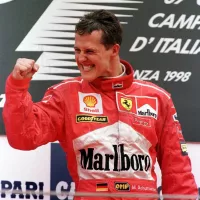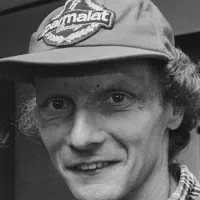The Belgian Grand Prix is a Formula One World Championship motor race. Belgium's first national race took place in 1925 at the Spa region's race track, an area renowned for motorsport since the sport's early days. Built in 1921, the Circuit de Spa-Francorchamps initially hosted motorcycle racing until 1924. Following the triumph of the 24 Hours of Le Mans in 1923, a similar 24-hour endurance race, the Spa 24 Hours, was established at the Spa track.
1921: Construction of Circuit de Spa-Francorchamps
The Circuit de Spa-Francorchamps, built in 1921, initially hosted only motorcycle races.
1924: Transition to Motor Racing at Spa-Francorchamps
After being used exclusively for motorcycle racing, the Circuit de Spa-Francorchamps began hosting motor racing events in 1924.
1925: First Belgian Grand Prix
The inaugural Belgian Grand Prix took place in 1925 at the Spa-Francorchamps circuit in the Ardennes region. This marked the beginning of Belgium's involvement in Grand Prix motor racing.
1930: Return and Modification of the Circuit
After a five-year hiatus, the Belgian Grand Prix returned in 1930 with a modified Spa-Francorchamps circuit bypassing the Malmedy chicane. Louis Chiron emerged victorious in this race.
1931: Endurance Format
The 1931 Belgian Grand Prix transitioned into an endurance race format, with William Grover-Williams and Caberto Conelli claiming the win.
1933: Nuvolari's Triumph
Tazio Nuvolari secured victory in the 1933 Belgian Grand Prix.
1935: Caracciola and the Reinstated Malmedy Chicane
Rudolf Caracciola, driving a Mercedes, won the 1935 Belgian Grand Prix. The race marked the return of the Malmedy chicane to the circuit.
1939: The Birth of Raidillon and Seaman's Fatal Crash
The 1939 race witnessed the creation of the Raidillon corner, a bypass of the Ancienne Douane section. Tragically, British driver Richard "Dick" Seaman lost his life in a crash during the race while leading.
June 1946: Post-War Return and Venue Change
Following World War II, the Belgian Grand Prix resumed in June 1946 at a new location. The race took place in Bois de la Cambre, a public park in Brussels, and was won by Eugène Chaboud driving a Delage.
1950: Introduction of Formula One and Alfa Romeo's Dominance
The inaugural Formula One World Championship in 1950 included the Belgian Grand Prix. Alfa Romeo drivers Juan Manuel Fangio and Nino Farina exhibited dominance, with Fangio securing victory.
1952: Alberto Ascari's Victories
Alberto Ascari, son of the inaugural race winner Antonio Ascari, achieved victory at the Belgian Grand Prix in both 1952 and 1953.
1953: Alberto Ascari's Dominance and Notable Incidents
The 1953 race saw Alberto Ascari dominate in his Ferrari, while Juan Manuel Fangio crashed and José Froilán González experienced a steering failure.
1955: Mercedes' Dominance and Moss's Misfortune
The 1955 race saw Mercedes dominate with Fangio and Stirling Moss leading. Despite a wheel coming loose, Moss managed to secure third place after taking over his teammate's car.
1956: Wet Race and Collins' Victory
In a rain-affected 1956 race, Stirling Moss took an early lead, but a lost wheel hindered his progress. Fangio, facing gearbox issues, relinquished his lead to teammate Peter Collins, who ultimately won.
1957: Cancellation Due to Financial Constraints
The 1957 Belgian Grand Prix was cancelled due to a lack of financial resources stemming from high fuel costs caused by the Suez crisis.
1958: Brooks' Victory and the Rise of Rear-Engined Cars
British driver Tony Brooks, driving a Vanwall, won the 1958 Belgian Grand Prix, besting his teammate Stirling Moss. This era marked the rise of rear-mid-engined cars, which proved to be faster and more agile.
1958: Circuit Upgrades and Repuation for Danger
The Spa-Francorchamps circuit underwent upgrades in 1958, including new facilities, track resurfacing, and a wider pit straight. However, the circuit gained notoriety for its unforgiving nature, high speeds, and lack of safety features, leading to concerns among drivers.
1959: No Race Held
The Belgian Grand Prix was not held in 1959.
1960: A Dark Weekend in Formula One History
The 1960 Belgian Grand Prix is remembered as one of the darkest weekends in Formula One history, marred by tragic accidents due to the high speeds and lack of safety measures at Spa-Francorchamps.
1961: Mandatory Roll Bars Introduced
In response to safety concerns, roll bars were made mandatory in Formula One cars starting from the 1961 season.
1961: 1961 Belgian Grand Prix
The 1961 Belgian Grand Prix saw Ferrari dominate, securing a 1-2-3-4 finish with Phil Hill taking the victory.
1962: 1962 Belgian Grand Prix
Jim Clark achieved his first Formula One victory at the 1962 Belgian Grand Prix, marking the beginning of a streak where he would go on to win the next three Belgian Grands Prix.
1962: Start of Clark's Winning Streak
Jim Clark commenced his streak of four consecutive Belgian Grand Prix wins in 1962.
1963: 1963 Belgian Grand Prix
The 1963 Belgian Grand Prix was heavily affected by rain, leading to challenging conditions for the drivers. Jim Clark emerged victorious, finishing an impressive 4.5 minutes ahead of second-placed Bruce McLaren.
1965: End of Clark's Winning Streak
Jim Clark achieved his fourth consecutive victory at the Belgian Grand Prix in 1965, concluding his dominant run at the event.
1966: 1966 Belgian Grand Prix
The 1966 Belgian Grand Prix introduced new regulations, allowing for engines with a maximum capacity of 3 liters. This change doubled the horsepower of the cars. The race, marked by heavy rain, saw a series of accidents. Jackie Stewart suffered a major crash, prompting his advocacy for improved safety measures in motorsport. John Surtees claimed victory in a Ferrari.
1967: 1967 Belgian Grand Prix
The 1967 Belgian Grand Prix was won by Dan Gurney driving an Eagle, marking the only Formula One victory for the Eagle team. Mike Parkes, driving for Ferrari, experienced a severe crash at Blanchimont, ending his Formula One career.
1968: 1968 Belgian Grand Prix
The 1968 Belgian Grand Prix was significant for introducing wings as aerodynamic devices in Formula One. Bruce McLaren, driving for his own team, secured his and the team's first victory. However, the race was marred by Brian Redman's serious accident, resulting in injuries that sidelined him for much of the year.
June 1969: Cancellation of the 1969 Belgian Grand Prix
The 1969 Belgian Grand Prix was canceled in early April due to safety concerns raised by drivers, particularly Jackie Stewart, who demanded improvements to the circuit's barriers and road surfaces. The track owners' reluctance to invest in these upgrades led to the withdrawal of British, French, and Italian teams, ultimately forcing the cancellation.
1970: 1970 Belgian Grand Prix
The 1970 Belgian Grand Prix, held at Spa, saw the implementation of some safety measures, including barriers and a temporary chicane. Pedro Rodriguez won the race for BRM. However, concerns about the track's speed and safety persisted.
1971: Cancellation of the 1971 Belgian Grand Prix
The 1971 Belgian Grand Prix was canceled because the Spa-Francorchamps circuit did not meet the FIA's mandatory safety standards, further emphasizing the growing concerns about driver safety in the sport.
1972: 1972 Belgian Grand Prix
The 1972 Belgian Grand Prix marked the beginning of the event's rotation between Circuit Zolder and Nivelles-Baulers. Emerson Fittipaldi won the race held at Nivelles.
1973: End of Honorary European Grand Prix Title
Until 1973, the Belgian Grand Prix received the honorary title of "European Grand Prix" six times, a designation given annually to a prominent European race.
1974: 1974 Belgian Grand Prix
Emerson Fittipaldi won the 1974 Belgian Grand Prix, held at Nivelles-Baulers. However, the circuit's unpopularity among the Formula One community and financial challenges led to its decline as a host for future races.
1975: Niki Lauda's First Victory at Zolder
On this date in 1975, Niki Lauda secured his first victory at the Zolder circuit, marking the beginning of his consecutive wins at this track.
1976: Niki Lauda's Consecutive Win at Zolder
Niki Lauda achieved back-to-back victories at the Zolder circuit in 1976, solidifying his presence at the track.
1977: Gunnar Nilsson's Only F1 Victory
In 1977, Zolder witnessed Gunnar Nilsson's first and only victory in Formula 1, marking a significant moment in his career.
1979: Spa-Francorchamps Shortened and Alain Prost's Victory
In 1979, Spa-Francorchamps was shortened to improve safety. Alain Prost won the first race on the new configuration.
1979: Jody Scheckter's Victory for Ferrari
Jody Scheckter claimed victory at the 1979 Belgian Grand Prix, driving his Ferrari to success.
1980: Didier Pironi's First F1 Win
The 1980 Belgian Grand Prix at Zolder saw Didier Pironi achieve his first-ever victory in Formula 1, driving for Ligier.
1981: Tragedy and Chaos at the 1981 Belgian Grand Prix
The 1981 Belgian Grand Prix at Zolder was marked by tragedy and chaos. A mechanic, Giovanni Amadeo, was fatally struck in the pitlane during practice. On race day, a driver's strike delayed the start due to poor track conditions. During a chaotic start, a mechanic was severely injured and several marshals narrowly avoided being hit by cars at full speed. Carlos Reutemann ultimately won the race.
1982: Gilles Villeneuve's Fatal Crash at Zolder
During practice for the 1982 Belgian Grand Prix at Zolder, Gilles Villeneuve was involved in a fatal collision. After colliding with Jochen Mass, Villeneuve's Ferrari flipped multiple times, causing severe injuries that ultimately led to his death. John Watson went on to win the race.
1984: Michele Alboreto's Win at Zolder
Michele Alboreto won the 1984 Belgian Grand Prix driving for Ferrari, marking the last Formula 1 race held at the Zolder circuit.
1985: Ayrton Senna's First Belgian Grand Prix Victory and Track Issues
The 1985 Belgian Grand Prix was postponed due to issues with a new track surface that broke up in hot weather. Rescheduled to September, the race saw Ayrton Senna secure his first of five victories at the Belgian Grand Prix.
1986: Nigel Mansell's Domination
Nigel Mansell dominated the 1986 Belgian Grand Prix, showcasing his racing prowess.
1988: Start of Senna's Winning Streak
Ayrton Senna began his streak of four consecutive Belgian Grand Prix victories in 1988.
1988: First Late Summer Belgian Grand Prix
The 1988 Belgian Grand Prix marked a shift in the race's traditional schedule, becoming the first to be held in late August/early September, a trend that continues to this day.
1990: Multiple Race Restarts
The 1990 Belgian Grand Prix witnessed an unusual series of events, requiring two restarts due to separate accidents at the La Source hairpin and Eau Rouge.
1991: End of Senna's Winning Streak
Ayrton Senna won his fourth consecutive Belgian Grand Prix in 1991, marking the end of his dominant streak at the circuit.
1992: Michael Schumacher's First Grand Prix Victory
In 1992, Michael Schumacher achieved his first-ever Formula 1 victory at the Belgian Grand Prix, driving for Benetton, a year after his debut at the same circuit.
1993: Damon Hill's Victory in a Close Battle
Damon Hill emerged victorious in the 1993 Belgian Grand Prix after an intense battle with Ayrton Senna and Michael Schumacher.
1994: Chicane Added at Eau Rouge
In response to the tragic deaths of Ayrton Senna and Roland Ratzenberger at Imola, a chicane was added at the bottom of Eau Rouge for the 1994 Belgian Grand Prix to reduce speed.
1994: 1994 San Marino Grand Prix
The 1994 Formula One San Marino Grand Prix, held at the Autodromo Enzo e Dino Ferrari in Imola, Italy, marked a tragic turning point in the history of the sport. The event witnessed the deaths of two drivers, Ayrton Senna and Roland Ratzenberger, during separate incidents, casting a dark shadow over the racing world and prompting significant safety reforms.
1995: Michael Schumacher's Victory from 16th Place
In 1995, Michael Schumacher won the Belgian Grand Prix from 16th on the grid, which remains the lowest starting position for a winner in the race's history.
1995: Chicane Removed, Schumacher's Winning Streak
The chicane introduced at Eau Rouge in 1994 was removed for the 1995 race. Michael Schumacher went on to win the event, beginning a streak of three consecutive Belgian Grand Prix victories.
1998: Damon Hill and Jordan's First Victory Amidst Controversy
The 1998 Belgian Grand Prix was a chaotic race with torrential rain leading to a major accident and poor visibility. Michael Schumacher collided with David Coulthard in the challenging conditions, an incident that sparked controversy. Damon Hill and his Jordan team secured their first-ever Formula One victory in this dramatic race.
1999: Ilmor Engine Partnership Begins
The collaboration between the Belgian Grand Prix and Ilmor for engine supply, funded by Mercedes, began in 1999.
2001: Michael Schumacher Breaks Alain Prost's Win Record
Michael Schumacher secured his 52nd Grand Prix victory at Spa in 2001, surpassing Alain Prost's long-standing record of 51 wins.
2003: Belgian Grand Prix Cancellation
The 2003 Belgian Grand Prix was canceled due to the country's strict tobacco advertising laws, highlighting the impact of legislation on Formula 1.
2004: Michael Schumacher's Seventh World Championship Title
Spa-Francorchamps became the stage for Michael Schumacher's seventh World Drivers' Championship title in 2004, further cementing his legacy as a racing legend.
2005: Ilmor Engine Partnership Ends
The partnership between the Belgian Grand Prix and Ilmor for engine supply, funded by Mercedes, concluded in 2005.
2006: Belgian Grand Prix Cancellation
The 2006 Belgian Grand Prix was canceled due to incomplete repair work at Spa-Francorchamps, highlighting the importance of infrastructure in hosting Formula 1 races.
2007: Kimi Räikkönen's Third Consecutive Win
The 2007 Belgian Grand Prix marked the return of the event after its cancellation the previous year. Kimi Räikkönen dominated the race, taking both pole position and his third consecutive victory at Spa.
2008: Lewis Hamilton Wins Amidst Controversy
Lewis Hamilton's victory at the 2008 Belgian Grand Prix was overshadowed by a controversial penalty. Despite navigating a rain-affected race and finishing first, a 25-second penalty for cutting a chicane relegated Hamilton to third place.
2009: Bernie Ecclestone Proposes Rotation
In 2009, Formula 1 boss Bernie Ecclestone suggested rotating the Belgian Grand Prix with a race at the Nürburgring. The proposal, however, never came to fruition.
June 2020: Belgian Grand Prix Contract Extension
As of June 2020, the Belgian Grand Prix secured a contract extension, ensuring its place on the Formula 1 calendar through 2022, demonstrating its enduring presence in the sport.
2021: Shortest F1 Race in History
The 2021 Belgian Grand Prix was the shortest Formula One race ever, with only two laps completed under safety car conditions due to heavy rain. The race was red-flagged and not restarted, resulting in a classification based on the order after lap 1. Max Verstappen was declared the winner, followed by George Russell and Lewis Hamilton.
2022: Verstappen's Victory from 14th Place
Max Verstappen won the 2022 Belgian Grand Prix from 14th on the grid, marking the second-lowest starting position for a winner in the race's history.
2022: Belgian Grand Prix Contract Extension
The Belgian Grand Prix was held in 2022, as part of its contract extension.
October 2023: Belgian Grand Prix Contract Extension
In October 2023, the contract for the Belgian Grand Prix was extended to the 2025 season.
Mentioned in this timeline

Michael Schumacher is a retired German Formula One racing driver...

Max Verstappen is a highly successful Dutch-Belgian Formula One driver...

Lewis Hamilton is a British Formula One racing driver currently...

Niki Lauda was an Austrian Formula One driver and aviation...
France officially the French Republic is primarily located in Western...

A car also known as an automobile is a wheeled...
Trending

1 month ago Billie Eilish's 'Hit Me Hard and Soft' 3D Concert Film Coming to Theaters

8 months ago Amad Diallo voices frustrations, praises medical team, eyes Europa League after injury.

5 months ago Sebastian Stan to star in 'Frankenstein in Romania' film written by Radu Jude.
Vance Joseph is an American football coach and former player currently serving as the defensive coordinator for the Denver Broncos...

2 months ago Lake Tahoe: Service Roads Closure, Heavenly Village Ice Rink Opens with Bear!

Kliff Kingsbury is an American football coach currently serving as the offensive coordinator for the Washington Commanders in the NFL...
Popular

Stranger Things created by the Duffer Brothers is a popular...

XXXTentacion born Jahseh Dwayne Ricardo Onfroy was a controversial yet...

Kelsey Grammer is an accomplished American actor producer and singer...

Candace Owens is an American conservative political commentator and author...

Bernie Sanders is a prominent American politician currently serving as...

Melania Trump a Slovenian-American former model has served as First...